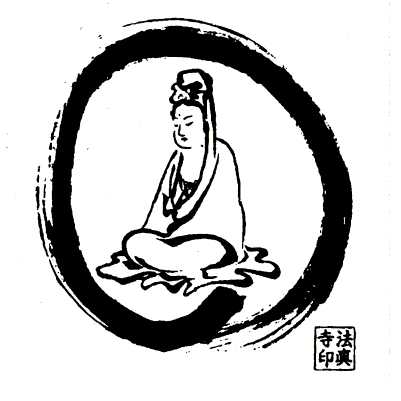
The Buddhist Rosary
The Rosary (Jap.: juzu; Skt: mala) is often associated with Avalokiteshvara (Jap.: Kanzeon; Chin.: Kuan Yin), the Bodhisattva of Compassion, whose 108-bead rosary shows the conversion of the 108 worldly delusions.
Many Buddhist churches adopted the rosary into their meditation practice, the specific use depending on the tradition concerned.
The rosary is viewed as an aid to meditation, a tangible reminder of holding fast to the stillness of meditation in particularly difficult circumstances—whether they be noisy or confusing surroundings, physical mishaps, conflicts between people or groups, or painful experiences arising in one’s own training.
When a rosary is used, along with helping oneself, the benefits of meditation may be offered to assist others in difficulty.
“Transfer of Merit” in Buddhism is not widely discussed or even completely explainable in words.
However, one who meditates deeply knows that the benefits of meditation do extend to all beings and that it can be of specific help when one is willing to share the benefits of meditation with whoever is in need. In this way, the rosary may be used in “transferring merit” to someone ill, dying, or facing a personal crisis.
The rosary may simply be worn around the neck or left wrist, or the beads may be turned while reciting a short mantra appropriate for the occasion, for example, “Hail to Avalokiteshvara Bodhisattva” in situations calling for compassion.
Another possible mantra is found in The Scripture of Great Wisdom: “O Buddha, going, going, going on beyond and always going on beyond, always becoming Buddha. Hail! Hail! Hail!”
Or the Three Refuges may be recited: “Homage to the Buddha, Homage to the Dharma, Homage to the Sangha,” as may the name of any Buddha or Bodhisattva.
The “divider” beads are not part of the rosary bead count; they separate the main section of beads into smaller groups and provide places where one may pause and meditate silently, bringing the mind to one-pointedness.
Rosaries usually have bead count in multiples of nine.
The 27-bead separation into six, fifteen, and six is one that is used in our tradition. The tassels at the base represent the roots of the lotus from which grow the stem and flower of enlightenment.
The one-tassel rosary is often used in our tradition, signifying unity—the One in the many. Two tassels convey diversity—the many in the One.
The Buddhist rosary has numerous practical uses, many of which arise naturally in the course of meditation and training.
Fundamental in the use of the rosary is the meditation of the trainee, for which the circle of beads is a simple and effective reminder.
From:
Shasta Abbey